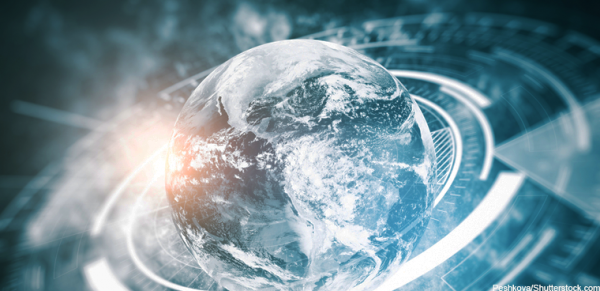Downstream effects of COVID-19 on technology – GCN.com

Tech called up ‘in the war against the unexpected’
With much attention understandably focused on health care related to the outbreak of the novel coronavirus known as COVID-19, a new report has spotlighted the downstream effects the outbreak could have on various technologies.
“Taking Stock of COVID-19,” by ABI Research, examined how societal changes brought about in response to Covid-19 are likely to play out as the health threat eases.
For instance, as people fled indoors to avoid contracting and spreading the virus, they went online to communicate, shop, work and take classes. So far, the internet has performed well, with no network blackouts or outages, but that may not be sustainable, according to the report.
“Further spread of the virus may limit the upgrade of these networks either because of equipment shortages or restrictions taken by mobile operators to limit the mobility of staff to prevent further spread of the virus,” it stated.
In the long term, the experience of shifting life online holds promise for consumers and enterprises alike as people turn to online shopping, e-banking, remote education, telehealth and mobile entertainment while enterprises rely more on videoconferencing and online training. Technologies that are likely to get a boost as a result include 5G, artificial intelligence, machine learning (ML), augmented and virtual reality, location technologies, cloud and entertainment localization, and robotics, the report said.
But even as 5G’s demand grows, the ability to provide it could slow. That’s because the supply chain, especially for vendors that rely on Chinese manufacturers, is already seeing a ripple effect as a result of COVID-19. What’s more, 5G standards will be delayed because conferences such as the 3rd Generation Partnership Project can’t meet.
The slowdown won’t last, however. “The effects of the virus will likely accelerate the current trend to make 5G supply chains more robust and less reliant on a very small set of very large infrastructure vendors,” the report stated, and “potential supply chain shortages for 5G equipment will reaffirm the strategy of the U.S. government to create a more open market, which will go well beyond the U.S. market in the long term.”
One movement that’s afoot is a push for domestic products. An executive order in the works would create “Buy American” regulations for masks and medical supplies, for instance, according to the report.
Here’s a look at some of the other markets the report looked at:
Biometrics. In general, biometric AI and ML algorithms are working in overdrive to help governments protect their networks and data as more workers connect remotely, but biometrics such as fingerprint recognition that rely on physical contact pose a health risk. And that shift away from contact-only applications is likely to continue in the long term, the report added, which means governments must consider other options, such as facial and iris recognition. That will generate its own slew of challenges “because a great deal of law enforcement, Automated Fingerprint Identification Systems (AFIS)/Biometric Identification Systems (BIS), border control, visa and immigrations applications are also based on fingerprint identification,” the report stated.
Drones and robotics. Companies that manufacture drones that can disinfect hospitals and robots that can deliver supplies and food to patients are likely to see demand surge, the report stated. It predicted that the automated material-handling market in health care will reach $4.2 billion in 2030, up from $178 million in 2019, representing a big opportunity for aerospace and drone companies to increase sales to government agencies. Drones used for inspection, monitoring and detection will get a short-term boost from the pandemic as well as those deployed to enforce curfews or monitor secure facilities with the small drone delivery market to reach $10.4 billion by 2030.
Utilities. Global quarantines are putting a strain on energy and water demand and on utilities’ ability to perform ongoing maintenance. In the short term, utilities must monitor changes in usage and redirect supply where necessary, the report stated, while in the long term, they should strategically invest in internet-of-things technologies to help monitor usage. “Cloud-based IoT platform vendors will need to proactively work with utility service providers to integrate [enterprise resource planning] systems and field service management platforms with real-time cloud databases, such as regional government databases that closely track the Covid-19 outbreak,” according to the report. “This real-time information would allow utilities to identify high-risk affected areas and find alternative routes or work orders for field crews.”
Big data. The data-driven responses to the virus will encourage the modernization of IT systems to improve the detection, tracking, and analysis in times of outbreaks and will depend on IoT data, the report stated. Initially, data will come from smartphone-based apps that pinpoint infections to limit community spread and expand to remote monitoring and smart inventory systems that track people and medical supplies.
Data protection. Governments and biometrics vendors are responsible for creating citizen-centric solutions and putting the proper security measures in place to prevent the concentration of personally identifiable information and citizens’ biometric, health-care and personal data “in the hands of a few entities with no visibility, no legislative barriers, no surveillance limitations, and no biometric revocation options for the foreseeable future,” the report stated.
“The good news is that technology will be a critical tool in the war against the unexpected,” the report concluded. “Leveraging robotics for the delivery of goods and transportation of people, tapping into the sharing economy to liberate additional capacity for housing, mobility, and freight during emergencies, building automated and flexible production lines and supply chains allowing scalability and regional independence, and massively deploying online and remote capabilities for education, healthcare, meetings, and entertainment will go a long way to being better prepared for disasters.”






